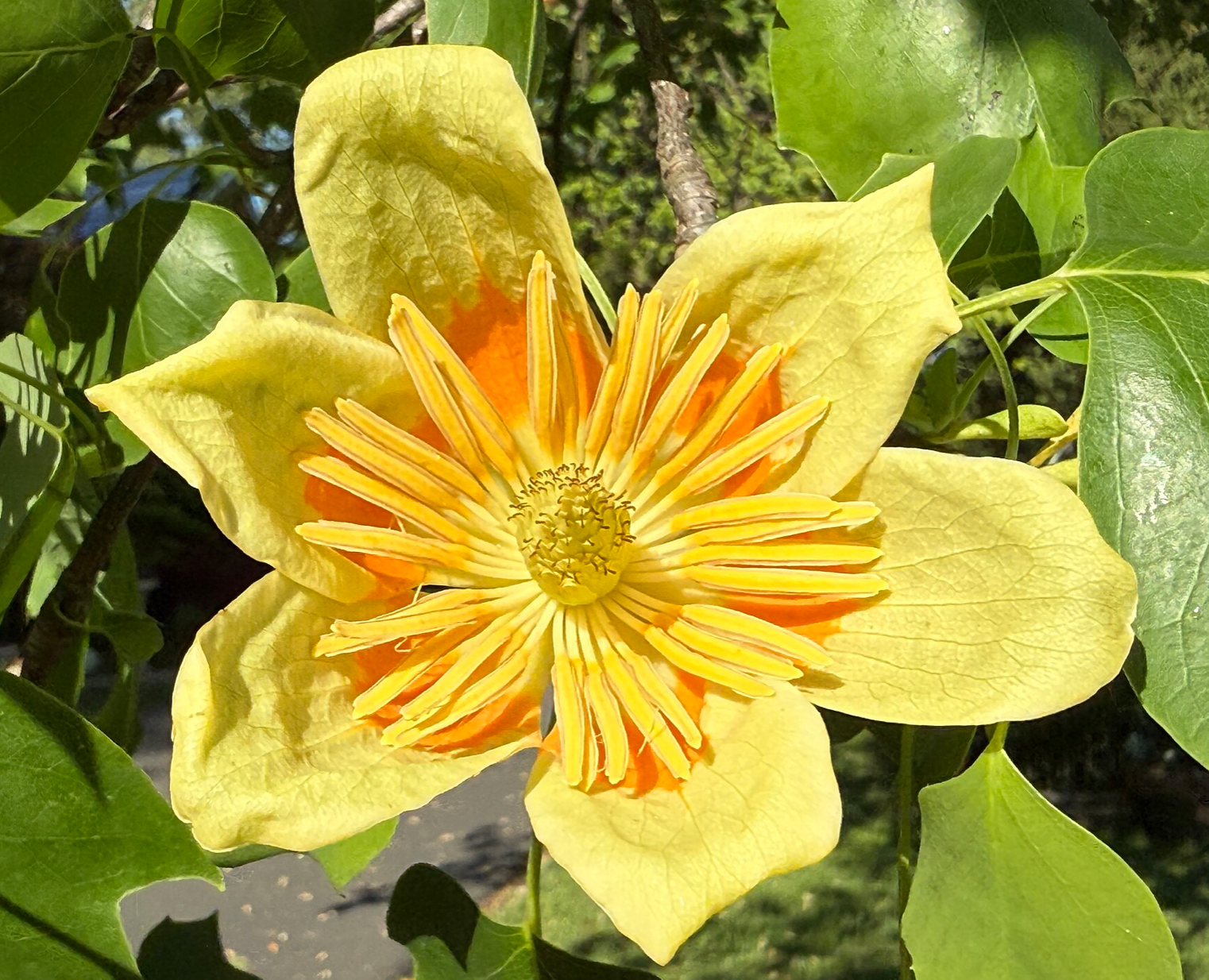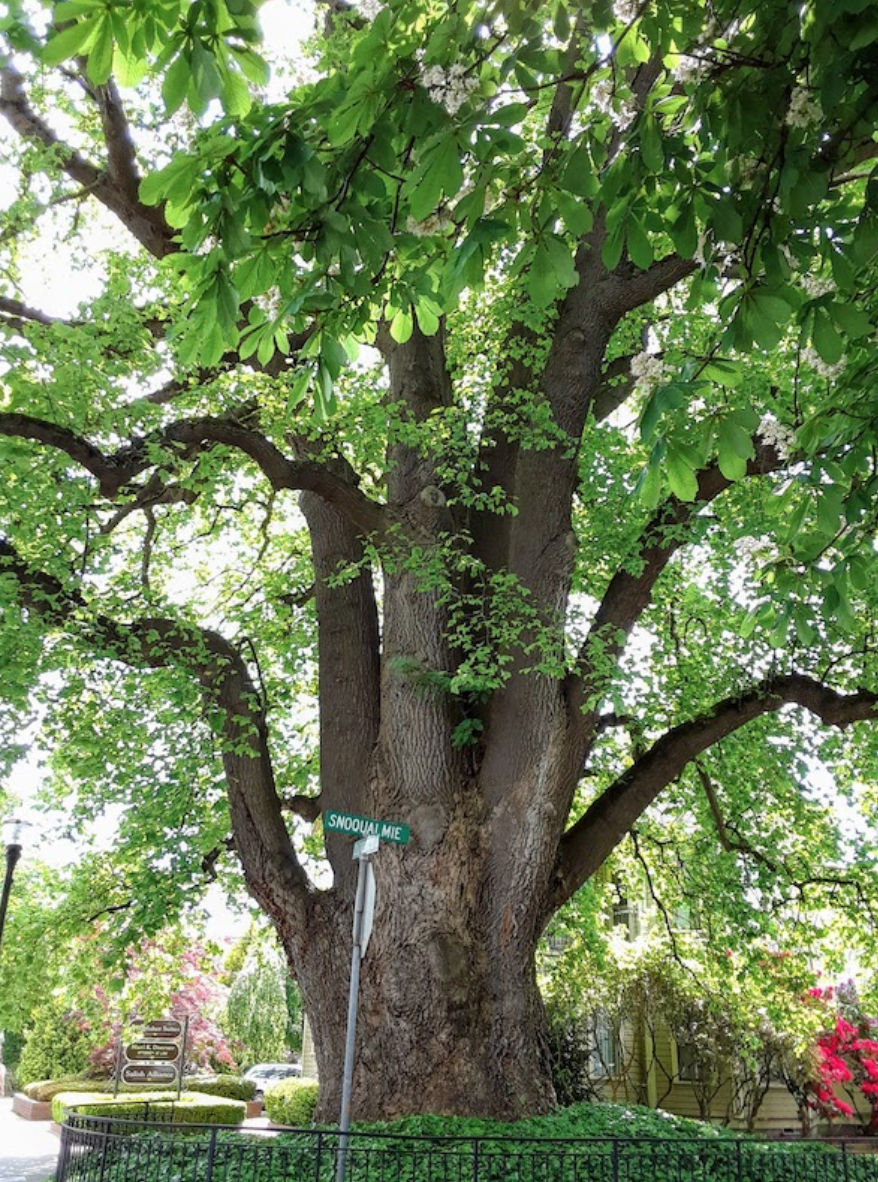TULIP POPLAR
Native to Georgia
Scientific name: Liriodendron tulipifera
Family: magnoliaceae
Not actually a poplar, the tulip poplar is actually a member of the magnolia family and believe to have existed since 100 million years ago.
Native American Use: The straight, tall trunks of tulip poplars were ideal for constructing dugout canoes, leading to the tree being nicknamed "Canoewood" by early settlers.
Symbolism:
Tulip poplars were sometimes planted as "Liberty Trees" during the American Revolution, symbolizing resistance against British rule.
Jefferson's admiration:
Thomas Jefferson admired the tree, calling it "The Juno of our Groves" and planting one at Monticello. The term Juno in Roman times meaning “A Goddess”
When the flower becomes fully open you start to see the resemblance to the Magnolia Family. The tree's distinctive tulip-shaped flowers, which bloom in late spring, have also been a source of aesthetic appreciation.
The leaves also seem to relate to a common theme of the Tulip form. Attractive and fanciful. Distinquished from Maple by the “V” in the top of the leaf. The alternate leaf arrangement will help identify the tree.
The largest and potentially oldest tulip poplar tree in the U.S. is located in Chesapeake, VA. It has a circumference of 33 feet (10 feet diameter) and is over 100 feet tall, with a hollow large enough for a dozen people to stand inside. Estimates suggest it is over 500 years.
Tulip tree trunks are characterized by their straight, tall, and smooth appearance, particularly in the lower portion.They often exhibit a distinctive diamond-shaped bark pattern with ridges and furrows. The trunk is usually clear of branches for a significant portion of its height, reflecting the tree's tendency to grow tall and straight.



